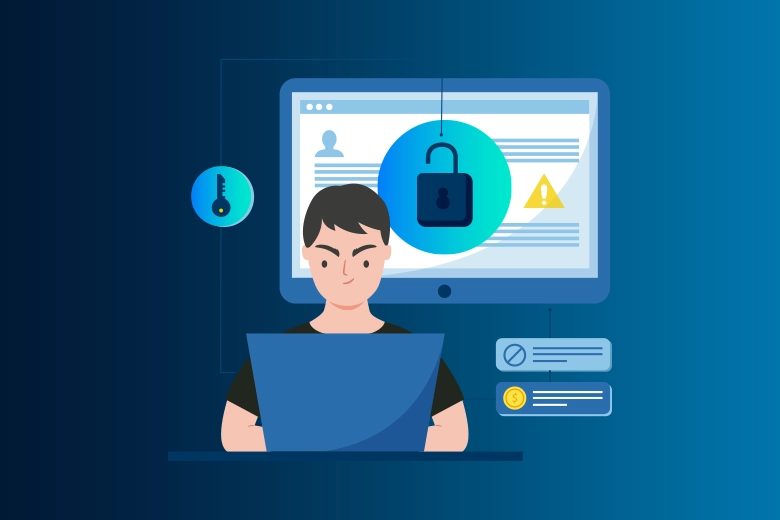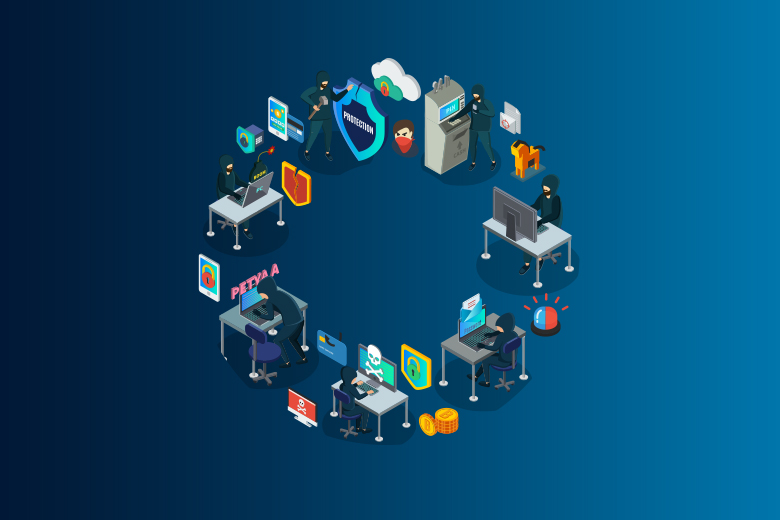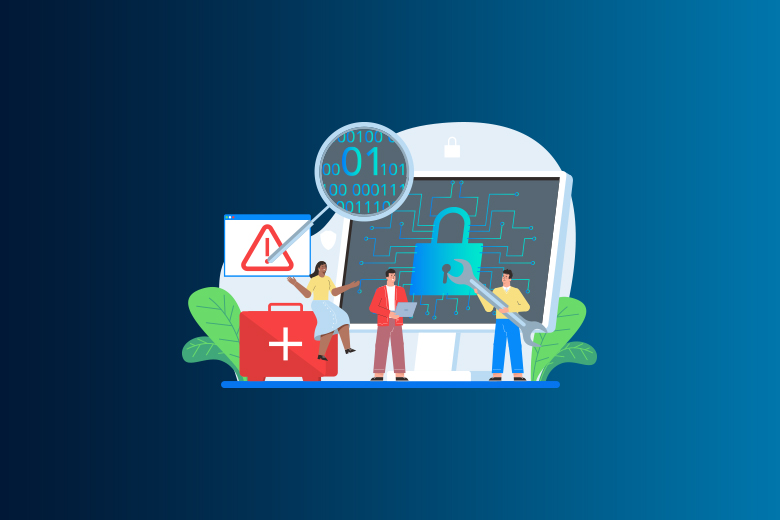01 April 2024
SafeAeon Inc.Storms happen all the time in the digital world, and the Akira ransomware has become one of the most harmful threats in recent months. This bad software was first found in March 2023 and has quickly grown into a major danger, especially for small and medium-sized businesses (SMBs).
There is no denying Akira's effect. According to research from Trend Micro, the group broke into an amazing 107 businesses between April and August 2023, with an alarming 85.9% of victims living in North America. Not only are these attacks annoying, but they can also be very bad because they often target important data and demand large amounts of money as ransom.
What's so scary about Akira is how flexible it is. Akira has recently changed its methods from standard ransomware that only encrypts data. Sophos security experts have found a troubling trend: people are stealing data without encrypting it. This means that businesses risk losing sensitive data and then having it leaked online, which could hurt their image even more and possibly break data privacy laws.
Good news: there are ways to get through this storm. Businesses can make themselves much less vulnerable to attacks by learning Akira's techniques and putting in place strong protection measures. This guide will give you the information and steps you need to strengthen your defenses against the Akira ransomware threat and come out on top.
Understanding How Akira Ransomware Works?
Akira ransomware gets into systems in several ways, including through malicious email files and by taking advantage of weak points at VPN endpoints. When Akira gets inside, it use tricks to avoid being caught. It gets around endpoint security steps and uses LOLBins. The fact that LOLBins use a computer's built-in features for bad things makes it harder to find and get rid of. It also gets system credentials by accessing the LSASS process memory, which gives it more power over systems that are impacted.
Akira locks files with encryption methods like the ones used by the Conti V2 ransomware that was leaked. These are CryptGenRandom and ChaCha 2008. The ".akira" ending lets you know that a file is encrypted. The malware also deletes shadow copies of files to stop people from trying to get the data back. Akira sometimes uses blackmail without encrypting files. Instead, she steals data and demands a ransom to keep it from being sold or shared with the public. After data is encrypted or stolen, a ransom letter is shown. The demands are usually very high, going up to hundreds of millions of dollars.
The Main Targets of Akira Ransomware
All businesses can be attacked online, but the Akira ransomware group seems to have a clear taste for certain targets. Businesses need to know these preferences to strengthen their defenses and avoid falling prey to this new threat.
Targeting Large Enterprises with Big Pockets: The people who run the Akira virus are going after big businesses with lots of money. They usually go after big businesses with lots of money because they think those companies will be more willing or able to pay big ransoms. Attacks on well-known organizations like the London Capital Group and the Development Bank of Southern Africa show this strategy in action.
A Multi-Pronged Approach: Going Beyond Industry Specificity Some ransomware groups target specific industries, like healthcare or banking. Akira, on the other hand, seems to target a wider range of industries. Security experts have seen hacks on businesses in several different areas, such as
Education: Schools often have private information about their students, which makes them easy targets for people who want to steal that information. When it comes to money, financial companies are easy targets because the data they store, like financial records and personally identifiable information (PII), is so valuable.
Making things: factories depend on operational technology (OT) systems a lot. These systems are more likely to be affected by ransomware attacks that stop production lines. Hospitals and other healthcare providers are becoming more and more targeted because the data they hold, like patient medical records, is so important.
Focus on geography: A worldwide threat that is mostly local: Attacks by Akira have been recorded all over the world, but research shows that there are more of them in some places. Trend Micro's study shows that a scary 85.9% of the victims live in North America, with large numbers also living in Europe and Australia. This regional focus could be because they are taking advantage of flaws in software that is widely used in those areas or because they are focusing on language-specific phishing operations.
Changes in Strategy:
Beyond Encryption: Data encryption is still a main strategy, but Akira has shown a worrying change toward stealing data without encryption. People who are targeted by this "double-extortion" scheme are put under a lot of stress. Not only do they lose access to important data, but it could also be leaked online, which would be very bad for their image, could get them in trouble with the law, and make it hard to win back customer trust.
Finding Vulnerability Factors: Going Beyond Size and Industry The Akira group goes after big businesses and certain industries, but they also take advantage of weaknesses in all kinds of businesses, no matter what size or industry they're in. Here are some important things that make businesses more likely to be hacked:
Weak Cybersecurity: Organizations are easy targets for ransomware attacks when they don't have strong cybersecurity measures in place, such as endpoint protection, routers, and regular vulnerability patching.
Uneducated Employees: Employees who don't know about phishing and social engineering are more likely to download malware and open harmful emails.
Outdated software: Attackers can easily take advantage of systems that have known flaws but have not been fixed.
Not Enough files: Businesses can't get their data back easily if they don't have enough files, so they're more likely to pay the ransom.
A threat with many layers needs a defense with many layers as well: The Akira group's varied ways of attacking show how important it is to take a broad approach to defense. It's not enough for businesses to use their size or field as a shield. Remember that the best protection is one that has many layers and covers both technical and human factors.
How to Protect Your Business from Akira Ransomware Threats?
Akira ransomware infections can have a big effect on a business by making it less productive, causing data loss, and costing a lot of money to pay the fee and start the recovery process. Companies can lower their chances of being hit by these ransomware attacks by following a few important steps:
Cybersecurity training should be required because Akira uses phishing and weak passwords to spread its malware. By teaching its employees about security protocols and how to spot common attack methods, thorough cybersecurity training can make a company much less vulnerable to these kinds of threats.
Take steps to stop ransomware: The specific ways that malware encrypts and extracts data are clear signs of an attack. Finding, blocking, and fixing Akira and other similar ransomware attacks can be made easier by using anti-ransomware tools that look for these and other signs.
Regularly back up your data: Some types of crypto-ransomware, like Akira, try to get people to pay ransoms by encrypting important files and asking money for the decryption keys. Businesses can get their data back without giving in to ransom requests if they back it up regularly and safely.
Careful Patch Management: Akira often breaks into networks by using VPN apps' security holes. It is very important to apply software fixes and updates at the right time to close these holes and stop ransomware from taking advantage of them.
Strong authentication protocols should be used: Akira specifically targets VPNs that don't have multi-factor authentication (MFA) and uses this weakness to make system attacks easier. Using multi factor authentication (MFA) on all work computers makes it much harder for ransomware to get past security measures with malware.
Adopt Network Segmentation: Ransomware usually has to move laterally through a network from where it enters to get to important data and encrypt it. By dividing the network into segments, it becomes harder for people to move laterally without being seen. This makes it safer for private data.
Ransomware Defense with Check Point: Ransomware is one of the most dangerous types of cyber threats, and it's always changing. It can affect both company security and the accuracy of data. The spread of Akira ransomware shows how important it is to have strong defenses against both the threat of losing data and the threat of putting private business and client information at risk.
Even though Akira is a fairly new type of ransomware, it has quickly become a very dangerous threat thanks to its clever ways of hiding itself and its dual strategy of encrypting data and blackmail, which is meant to get large ransoms from its victims.
A key part of keeping your business safe and running is stopping ransomware attacks before they happen. The CISO's Guide to Ransomware Prevention has a lot of information about how to stop ransomware dangers.
Conclusion
Many things need to be done to survive the storm of Akira Ransomware attacks. This includes a strong protection plan, thorough user education, and a plan for responding to incidents before they happen. As these threats get smarter, people and businesses need to stay ahead of them. They can do this by being very careful all the time and making sure that security measures are always up to date. Creating a culture of cybersecurity knowledge is also very important. It's not just technology that needs to be fought against Akira Ransomware. This also shows how strong and ready groups are to deal with cyber threats. We can lessen the effects by working together and sharing information and tools. With SafeAeon you can protect your computer worlds from future threats this way.














